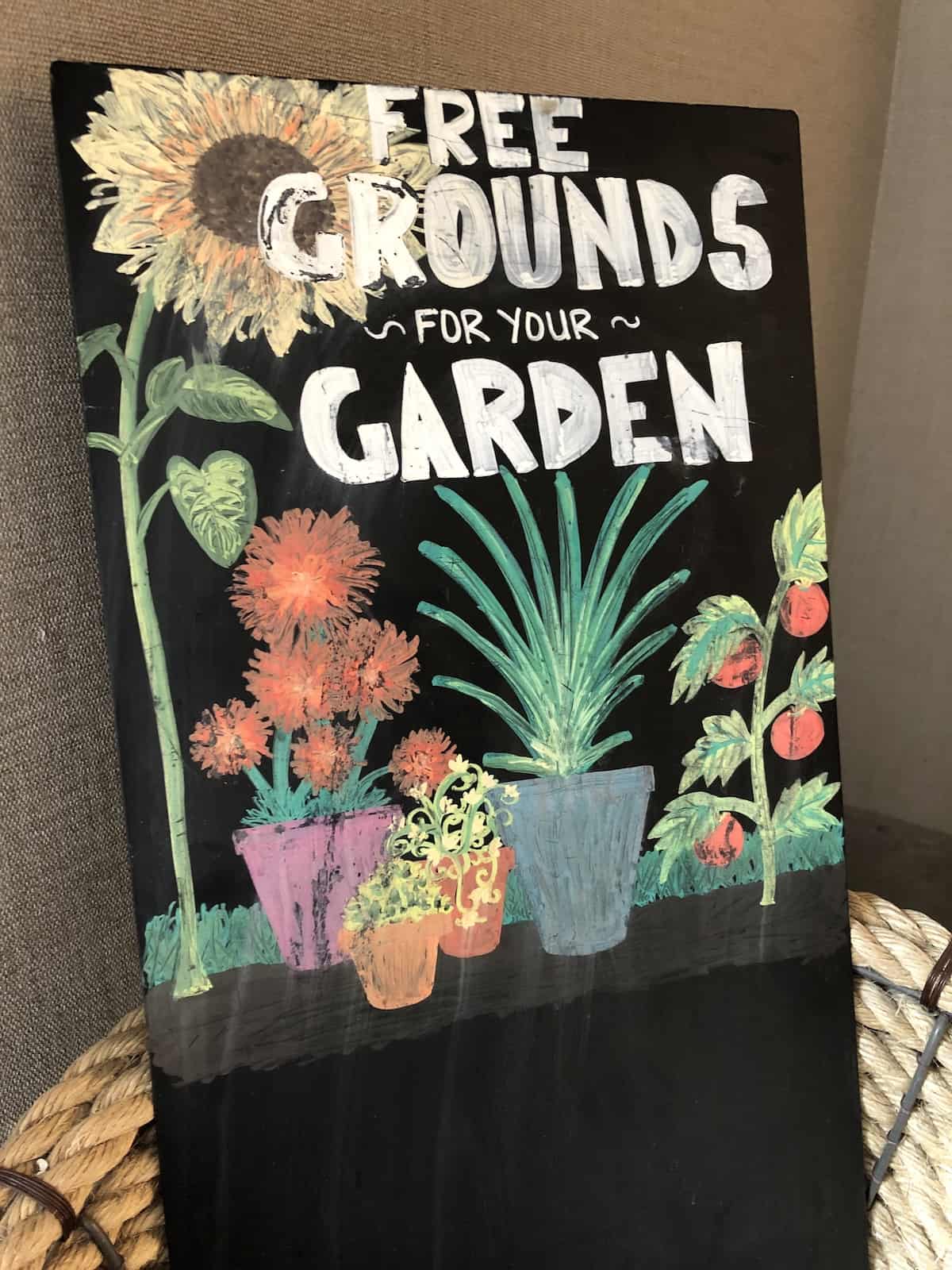Gardeners use coffee grounds for plants in many ways around their backyards, from soil amendments to fertilizers and even mulch. While they contain some nitrogen and retain moisture well, coffee grounds can also become hydrophobic, attract pests, and inhibit plant growth if used excessively. The most effective ways to use coffee grounds on plants are to add them to your compost and/or to exercise moderation.

Why do people use coffee grounds on plants?
The secret of coffee grounds’ appeal, aside from their accessibility and affordability, lies in their composition.
Coffee grounds contain roughly 2% nitrogen by volume. Nitrogen is a macronutrient (the N in NPK) and plays a key role in fostering lush, healthy foliage, along with contributing to overall plant health and growth.
Although this is one of the main reasons cited by gardeners, it is certainly not the only one. Coffee grounds are also used as a moisture-retaining agent and help improve soil structure in a similar way to peat moss. There is some controversy around the use of peat moss in the garden due to its environmental impact, making alternatives (especially repurposed and recycled options) far more popular these days.
And speaking of environmental considerations, using coffee grounds also contributes to a more sustainable and cost-effective garden, as it reuses what would otherwise be waste. Many coffee shops even allow you to take used coffee grounds for free (my local coffee shop has an entire corner dedicated to this purpose).
But do coffee grounds actually provide all the benefits gardeners claim they do? Let’s look at the pros and cons.

The pros of using coffee grounds
Coffee grounds are argued to provide plants with much-needed nitrogen, which helps promote strong leaf and stem growth. They cannot be considered a standalone fertilizer as they don’t contain all the nutrients plants require, but they can certainly be a beneficial supplement to a broader compost or fertilizer strategy.
Another significant advantage of using coffee grounds is their ability to retain moisture. This trait is particularly beneficial for container-grown plants that require consistent soil moisture. By incorporating coffee grounds into potting mix, you can enhance its water retention capacity, helping you save water in the long run.
Using coffee grounds on your plants also won’t cost you a cent if you’re a frequent coffee drinker or can obtain them from a local coffee shop. This availability and lack of a price tag make them an enticing addition to your gardening repertoire, especially considering the benefits to the environment at the same time.
The cons of using coffee grounds
Despite these apparent benefits, coffee grounds do present some challenges for plant health.
For starters, coffee grounds tend to attract undesirable pests, such as fungus gnats and thrips, which thrive in the moisture-rich environment coffee grounds provide. This is especially prevalent indoors, where coffee grounds are often added to the topsoil of containers, creating a breeding ground for flying pests.
My biggest pet peeve with coffee grounds is that they have a tendency to compact and repel moisture when they dry out. Even though they retain moisture well, if they remain dry for long periods they become too dry, stopping moisture from penetrating the soil.
This is particularly problematic when coffee grounds are applied in thick mats as mulch, also limiting airflow through the soil. If you’re the type of gardener who tends to forget about watering, coffee grounds may create more problems than they solve.
Adding excessive amounts of coffee grounds to the soil can also have the opposite intended effect on plant growth. A few studies have found that high levels of coffee grounds used on plants can actually inhibit plant growth rather than help it. This is largely due to the residual caffeine content in the used coffee grounds, which can adversely affect root development, germination, and overall plant health.
“In general, only composted coffee grounds should be worked in as a soil amendment, while either fresh or composted grounds can be used in a mulch layer. Fresh grounds are more likely to be phytotoxic (Wakasawa et al. 1998), so keeping them away from direct contact with desirable plant roots is recommended.”
Using coffee grounds in gardens and landscapes, by Dr. Linda Chalker-Scott, Washington State University
The best ways to use coffee grounds on plants
If you’re determined to integrate coffee grounds into your plant care routine, you can experiment with what works best for you. The one recommendation I have is that moderation is key. Don’t overload your potting mix with coffee grounds or use it everywhere as mulch. A few additions here and there can be helpful without exposing you to the potential negative side effects.
I think the best way to utilize coffee grounds is by adding them to your compost pile. This is where coffee grounds will be the most effective, producing a richer compost with a balance of nutrients (not just nitrogen) that can then be used to enrich your plants’ soil.
With a careful and thoughtful approach, coffee grounds can be a valuable resource, as long as you are aware of the possible downsides.
Left outdoors over the course of several months, bacteria and fungi break down the various chemical components of coffee grounds. Nitrogen-rich compounds including proteins and caffeine break down quickly.
Using coffee grounds in gardens and landscapes, by Dr. Linda Chalker-Scott, Washington State University







